Canyon has today launched its totally redesigned Lux, the German consumer-direct brand’s full suspension cross-country platform. The new bike is still a 100mm chassis but presents a lot of changes compared to the old bike.
Check out our first ride review of the new Canyon Lux on our YouTube channel
Canyon Lux highlights
- 100mm travel full suspension cross-country platform
- Capacity for two 800ml bottles inside the main triangle
- 1x specific design
- Droppers specced on all but two cheapest bikes
- Shares geometry with the Exceed
Canyon Lux suspension updates

Starting with the suspension layout, Canyon has adopted its Flat Shock configuration with the new Lux, with the shock now running along the underside of the top tube.

Critically, this new arrangement allows space to fit two 800ml bottles (even on a size Small) into the frame. This is key for longer rides and races.
While there are a number of bikes that also have the capacity for two bottles — the new Orbea Oiz announced yesterday, the Specialized Epic and the Cannondale Scalpel to name a few — it’s still a rarity, particularly with larger bottles, and helps the Lux to stand out in its category.
The new layout is also claimed to result in lower stresses being transmitted to the frame compared to the old rocker-driven vertically mounted shock arrangement, with forces now transmitted more directly into the shock. This has allowed Canyon to slim down both the linkage and frame itself, as well as improving suspension performance.
Canyon has adopted its “triple phase” suspension layout with the new Lux. This is essentially a fancy marketing name for every bike-tester's favourite phrase, describing a suspension curve that is ‘active off the top of the stroke, supportive in the middle, but ramps up nicely towards the end of the travel’.
As with many modern cross-country bikes, the rear end of the Lux is pivotless. Interestingly, the stays are formed such that they are under tension when the bike is unweighted, with the stays becoming ‘slack’ when the bike is weighted for sag. This is claimed to reduce stress on the stays and result in better performance towards the end of the travel.
The rocker is now formed of two cast alloy sections that are joined together with a steel bridge. While this setup is a touch heavier than an all-alloy construction would have been, the steel bridge adds considerable stiffness and makes the most of the small space on offer.
Rather than bang any old off-the-shelf bearings into the pivots, Canyon has specced the bike with bearings filled with a fancy high-viscosity anti-corrosive grease that is said to be very resistant to the ravages of jet washes.
The new layout has resulted in a 140g overall lower weight for the linkage than the old Lux.
So good is the new suspension that world cross-country marathon champion Alban ‘Albanator’ Lakata — who joined us on the launch — claimed that despite the alloy prototype version of the new bike weighing 300g more than the Lux of the time, he would have happily raced it as the suspension platform worked so much better than the old version.
Why has Canyon made the new Lux 1x specific?
You’ll have to read this article to find out why Canyon — one of the few brands that still offers 2x setups on most of its bikes — has made the Lux a dedicated 1x bike!
Canyon Lux geometry
Overall, the new Lux is better viewed as a refinement of the old model, rather than a drastically different design, with 20mm longer reach (450mm in a size large) and 15mm shorter chainstays (435mm across the board) than the old bike.
All bikes are now also specced with 80mm stems, which although not progressive in the broader context of MTB geometry, is fairly short for the world of cross-country.
Interestingly, Canyon has spent a lot of time ensuring the fit is the same between the Exceed — Canyon’s cross-country hardtail — and the new Lux.
To achieve this, Canyon has steepened the head and seat tube angles on the Lux by 0.5 degrees, to 70 and 74.5 degrees respectively. When the Exceed sits in sag — steepening the front end — its head angle will then be close to that of the Lux.
This won’t make much odds to the majority of riders, but for serious racers who have both a hardtail and full-suspension bike, it should make swapping between bikes feel much more natural.
Canyon Lux frame
The bike features a lightweight in-built chainstay protector that is moulded with air chambers to dull noise from chain slap. This weighs just 8.2g.
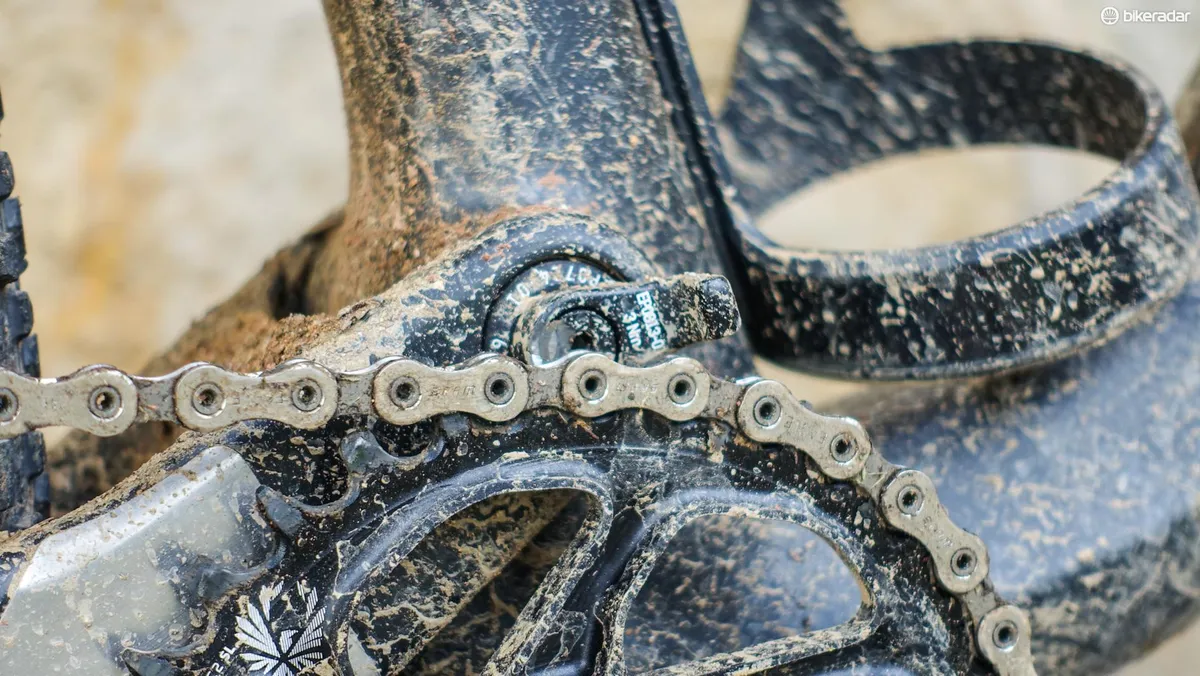
The bike also features a pleasingly simple chain guide that mounts to the lower pivot bolt. This 4.6g unit is no more than small L-plate that can be rotated to accommodate chainrings sized 32-38t.
As with all of Canyon’s carbon mountain bikes, the Lux features a knock-block style headset bump stop. For those that absolutely must have the lowest cockpit, it is possible to remove this winged spacer and the bolt-on block.
The bike features flat mount brake mounts out back. These are becoming more popular on cross-country bikes — as well as being a lighter overall, they are also said to be much easier to work with from a manufacturing perspective.
The bike is still compatible with post mount brakes when used in conjunction with an adaptor and will also work with 140, 160 and 180mm rotors.
All cables and hoses are fully internally routed through internal bonded plastic ‘hoses’ inside the rear end. Fixed foam tubes in the down tube are used to stop the cables from rattling about.
Canyon has developed its own funky sideloader bottle cages to accompany the Lux. These are ‘ambidextrous’, so can be made to work on either side of the bike, which will delight the lefties out there.
Interesting, while I have no doubt you could likely bodge something, the frame is not Di2 compatible out of the box — while Canyon knew that XTR 12 speed was coming, it claims it is yet to receive details of any potential upcoming updates to the Di2 version of that groupset.
Reading between the lines, this suggests to me that it may be because a wireless version is coming, but that is pure speculation.
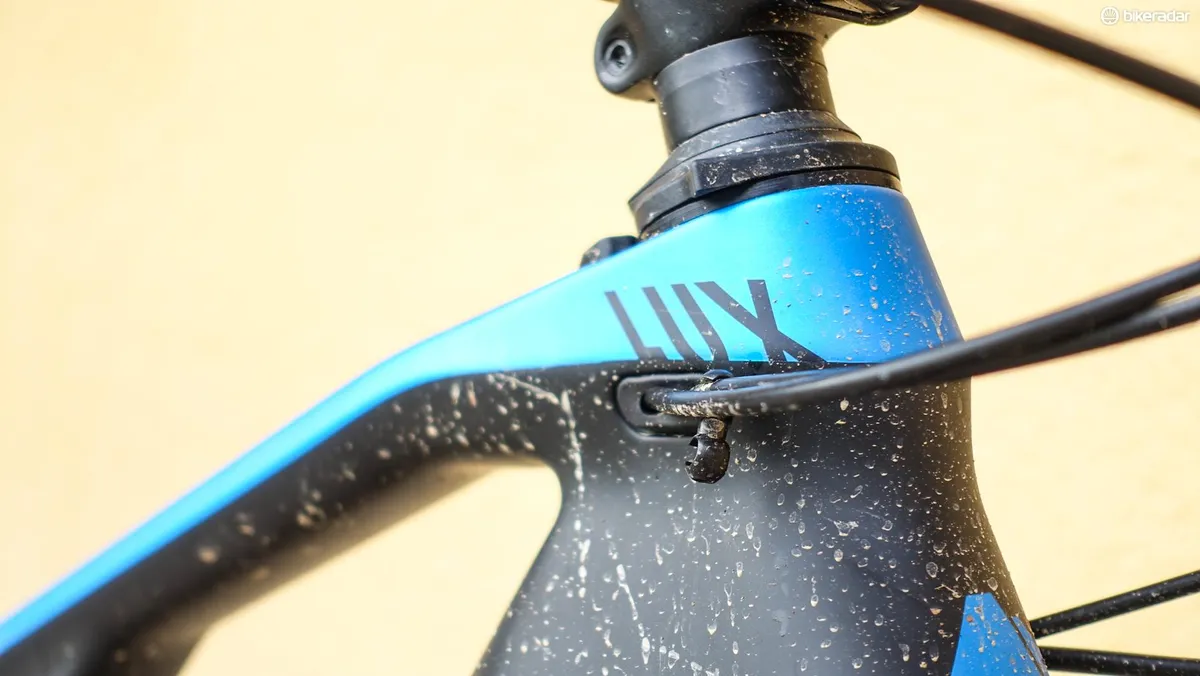
Overall, the silhouette of the new bike is unmistakably ‘Canyon’, featuring the same kink before the headtube, angular shapes and nice clean lines from the front of the bike to the rear as seen on many of its other bikes.
Canyon Lux SL and SLX frame weights
In typical Canyon fashion, the Lux is available in both CF SL and CF SLX versions.
The CF SL frame comes in at 1,852g and the CF SLX option at 1,662g. These weights are claimed weights for a size Medium frame with hangers and pivots, but no shock.
The weight of an SLX frame of the same size with a shock and lockout cable comes in at roughly 1,985g.
No alloy version is planned for the time being, but like the recent introduction of an alloy version of the previously carbon-only Inflite, I wouldn’t be surprised if this changes soon.
Lux CF SLX 9.0 Pro Race spec highlights
- Frame: Canyon Lux CF SLX
- Fork: Rock Shox SID World Cup
- Rear shock: Rock Shox Deluxe RLR
- Drivetrain: SRAM Eagle XX1 Eagle
- Brakes: SRAM Level Ultimate
- Wheels: Reynolds Black Label XC Carbon
- Tyres: Maxxis Ikon TT 2.2
- Stem: Canyon V14
- Handlebars: Canyon H20
- Saddle: Selle Italia SLR Lite
- Seatpost: KS Lev SI
Lux CF SLX 9.0 Pro Race first ride impression
In typical Canyon fashion, the name of the bike is a bit of a word salad, and I rode the Lux CF SLX 9.0 Pro Race, the second-most expensive build in the lineup at €5,600.

This bike features a pretty top-shelf build, with a SRAM Eagle XX1 groupset, Reynolds Black Label XC carbon wheels, a Rockshox SID World Cup fork, a fancy carbon cockpit from Canyon and all manner of other lovely parts.
Before we set out, Canyon and its geometry charts suggest that my 6-foot-ish mass should be riding a size Medium bike.
However, I rode the bike around the garden and felt like the bars were in my lap, so requested I get bumped up to a Large, which felt like a far better fit for my body shape and tastes.
This isn’t strictly a criticism of the Lux or Canyon’s sizing, but just highlights how critical it is to pay close attention to the geometry charts of a bike and compare it to what you know (and like) before committing.
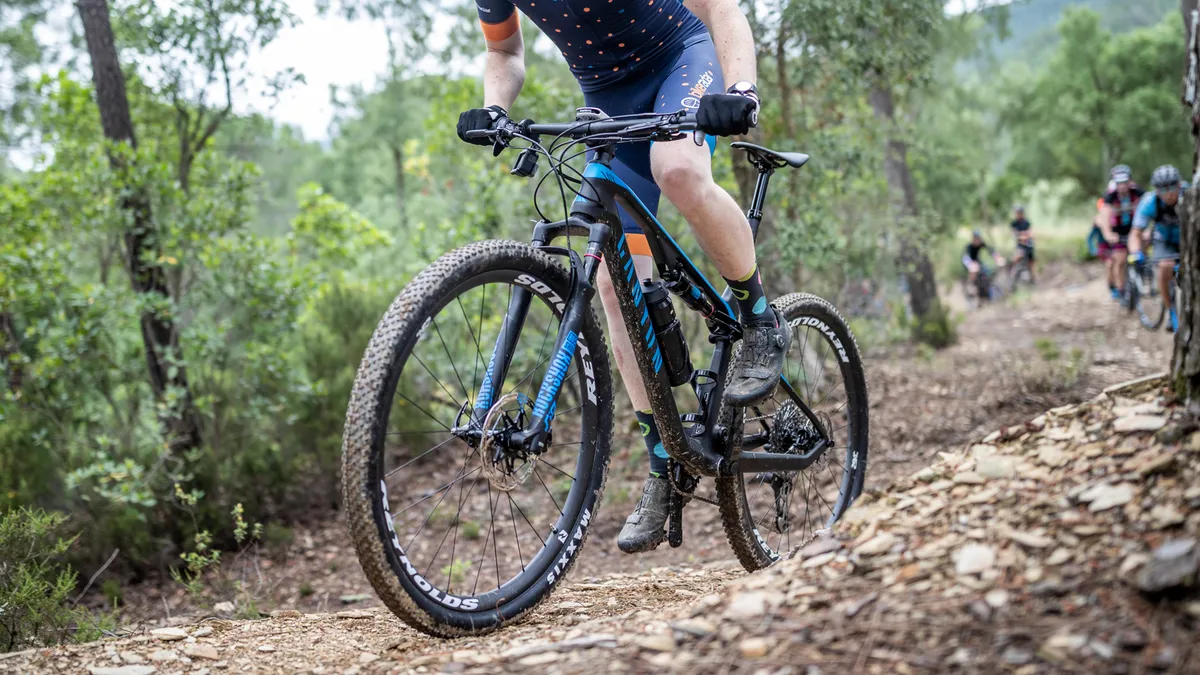
The bike climbs supremely well. For a full suspension bike, it feels very efficient with minimal pedal bob, but still remains quite supple and active over small bumps off the top of the stroke.
That it’s light should come as no surprise, with my bike coming in at a claimed 10kg (and no, I did not remember my scales, please leave your hateful comments below).
On slower speed tight and twisty terrain, the bike is fun and engaging in a classically cross-country kind of way — it’s nimble, precise and involved.
Despite having just 100mm of travel, the bike also coped admirably with the big hits I encountered in more wide open, fast and rough terrain throughout the day. The suspension really does work as claimed and ramps us nicely on big drops and in hard corners.
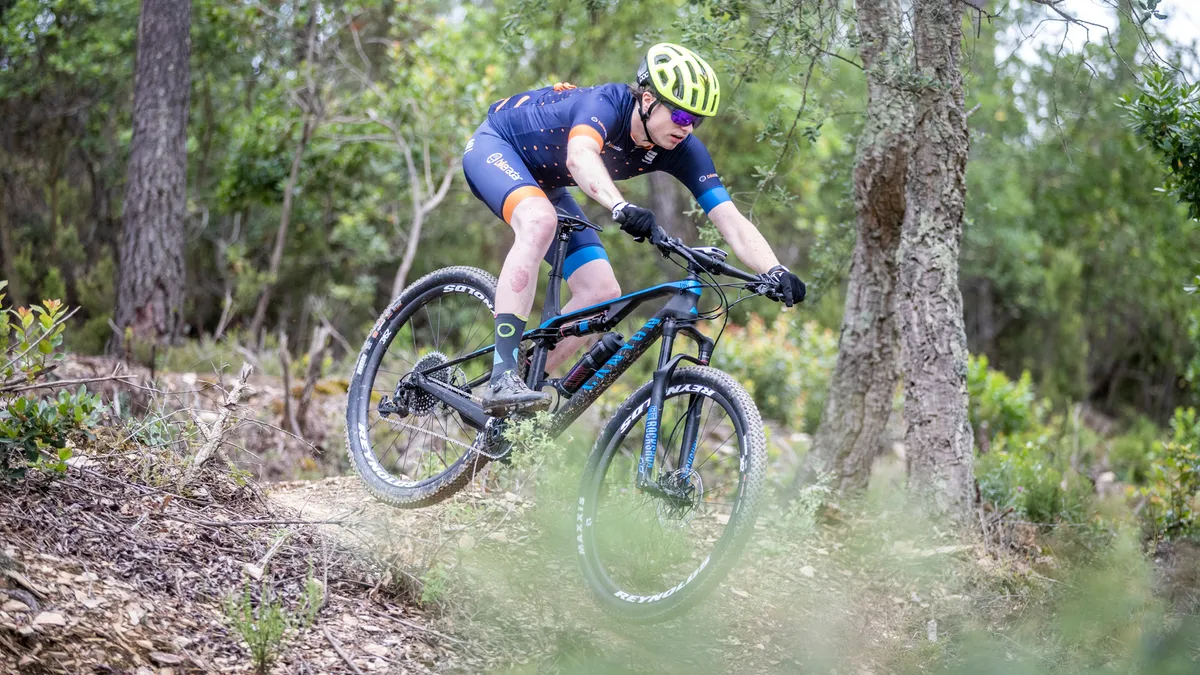
However, on steeper and faster terrain, it does feel a touch nervous. This is, of course, something of a general characteristic of cross-country bikes, but similarly minded bikes I’ve ridden with more progressive geometry, definitely have the advantage in these circumstances.

This nervousness is exacerbated by the 720mm wide bars.
In 2018, I view these as inexcusably narrow — the extra comfort and control that a wider bar affords in technical terrain is undeniable, and as I’ve quipped on a number of occasions now, it’s always possible to make a bar narrower, so to ship the bike with such narrow bars strikes me as baffling.
I spoke to Canyon about this and I understand that their position as a consumer-direct brand is fairly unique and that it would rather not have customers taking a hacksaw to their lovely new bike, but it still strikes me as a pretty unusual move in 2018.
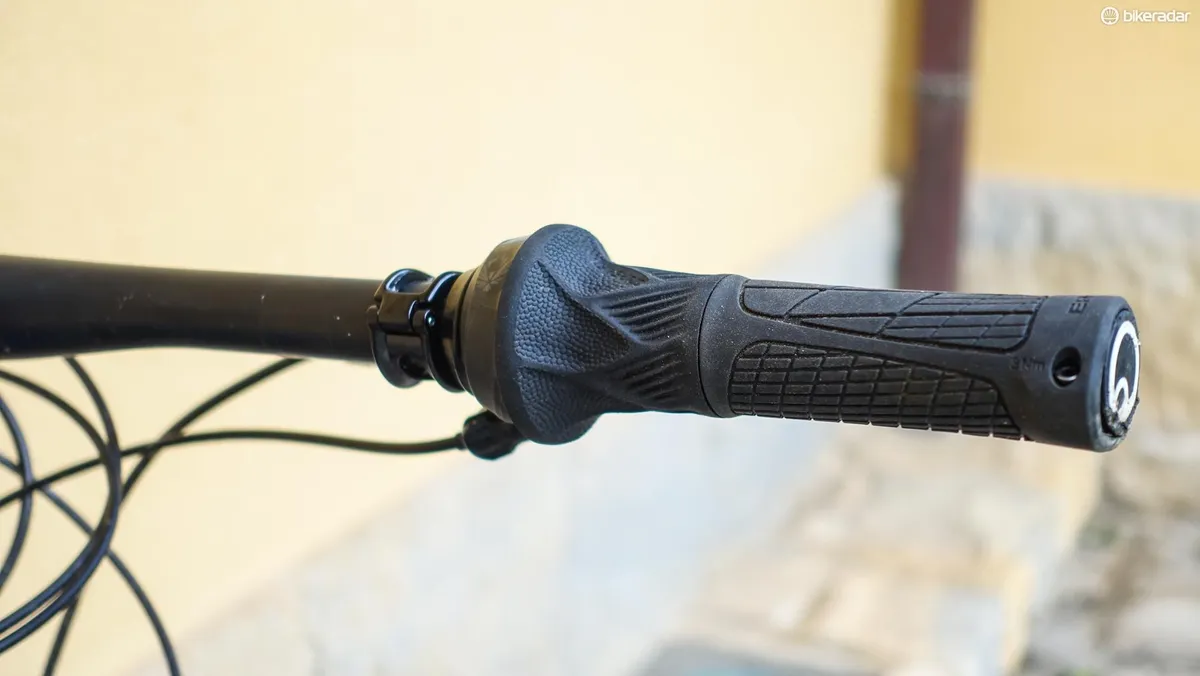
This narrowness is compounded by the decision to spec all of the SRAM-equipped bikes with GripShift shifters. It was novel getting to use these again and I enjoyed getting to dump a whole cassette in one go, but the shifters force you to move your hands inwards to shift, which is a touch unnerving.
It’s of course fairly easy to swap these out for trigger shifters, but it’s an expense I suspect many would rather avoid.
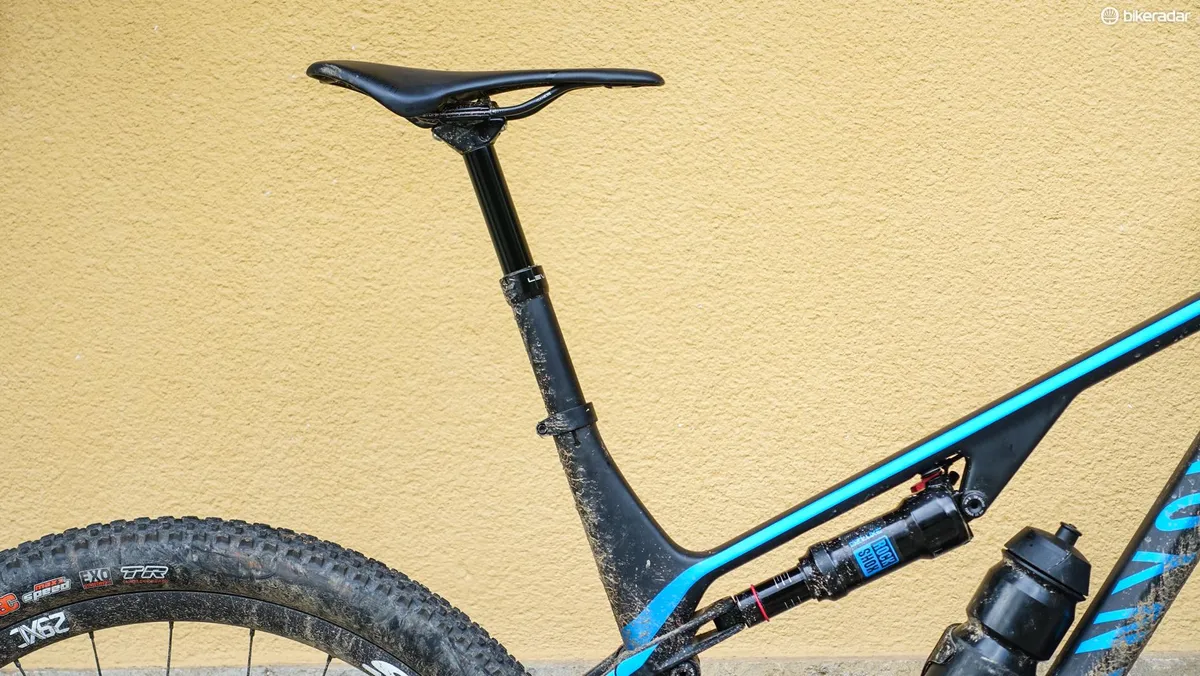
In a more progressive move, all bikes in the range (save for the two cheapest) come with a 100mm travel dropper post. I think droppers massively improve confidence and control on a cross-country bike and I commend Canyon for speccing these.
Canyon Lux early verdict
The Canyon Lux presents more of an evolution of the old bike rather than a radically new platform.
Unlike the more left-field Grail that I saw earlier this year, it’s clear that Canyon has really focused its efforts on making a properly sorted, life-friendly and capable cross-country bike, rather than something totally revolutionary.
However, that’s not necessarily a bad thing — the Lux is not going to be one for those looking for a super-progressive bike, but cross-country racers aren’t really known for that anyway.
There are a few spec choices I’d want to change from the off, namely the bars and, if I had a SRAM-equipped bike, most likely the shifters too. But overall, the package presents the usual levels of value for money that Canyon is so well known for; £5,600 is a lot of money in anyone’s books, but there are few other bikes as well-equipped for that sort of cash.
Given how short my test ride was, it’s too early to draw any real conclusions, but for those looking for an uncompromising all-round racing platform, I suspect the Lux is unlikely to disappoint.
Lux CF SLX 9.0 Pro Race price and availability
The new Lux CF SLX 9.0 Pro Race is available direct from Canyon for€5,599 / £4,999 / $5,899 / AU$7,999.



